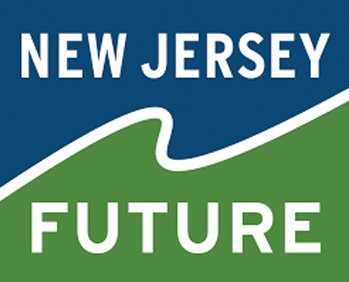
Financial Benefits
Green infrastructure can offer numerous financial benefits that are real and quantifiable. Depending on the type of practice used, financial benefits may include:
- Operational cost savings associated with lower building heating and cooling costs.
- Increased property values associated with more appealing landscape elements and improved opportunities for recreation.
- Higher market appeal for more socially conscious demographics, such as Millennials and Generation Z, leads to faster absorption.
- Marketing stories related to landscape and recreational appeal, better social and environmental conditions, climate resilience, and meeting LEED standards and other sustainability metrics build community support and shorten the public review phases.
- Increased Yield. Decentralized systems designed to quantify the benefits of infiltration can result in additional buildable area.

Signs like this can be used to attract positive attention and add value to a project. Image Credit: E&LP, 2020
Operational Cost Savings
Many studies have shown that green infrastructure can help you save on long-term operations costs through savings in building energy use, specifically for green roofs, landscape maintenance, and potable water use.
- Energy cost savings. For buildings with a green roof installation, there are cost savings associated with reductions in heating and cooling needs due to better insulation (General Services Administration, 2011). When estimating the exact value of energy savings for a specific green roof, it is helpful to think of the roof’s layer of plants and soil as insulation. Opportunities vary based on the size and type of your building, the overall site design, and the intended use.
- Potable water cost savings. Green infrastructure that incorporates rainwater harvesting for irrigation, toilet flushing, or industrial processes can significantly reduce costs associated with potable water service fees (CNT, 2010).
Increased Property Values
Green infrastructure can improve the appearance of the landscape and increase property value. Both home prices and commercial spending have been linked to the presence of green amenities, which can improve the character, visual quality, and overall “feel” of your development. This has tremendous implications if you are weighing the costs of green stormwater management versus the costs of a subsurface system.
Multiple studies have linked public green space and street trees with increased property value and spending:
- An analysis of residential property in Philadelphia found a 10% increase in the value of residences that were located near green infrastructure practices (Sustainable Business Network, The Economic Impact of Green Cities, Clean Waters, 2016).
- On commercial property, the presence of green infrastructure-related plantings is associated with 5-7 percent higher rents (Wolf, City Trees and Property Values, 2007).
- Research on consumer behavior in shopping districts has found that customers are willing to pay significantly more for goods—up to 8-12 percent—to shop in landscaped areas with mature tree canopy (NRDC, The Green Edge, 2013).
- A study of apartment building rental rates in New York City found that buildings with a green roof can charge 16 percent higher rents after other factors have been controlled (Ichihara & Cohen, New York City Property Values: What Is the Impact of Green Roofs on Rental Pricing? 2011).
Simply put, green infrastructure can help make your site a place where people want to spend time—to live, shop, relax outdoors, or take a morning walk. This increased foot traffic and curb appeal can lead to direct financial benefit.

Allowing access to a green roof is a way to increase customer demand and add value to the property. Image Credit: Live Roof, 2018
Marketing Opportunities
There are several ways in which developers can use green infrastructure to add value to projects and differentiate their brand in the marketplace. Financial benefits can be marketed as value-added amenities that create a competitive advantage. Indirect benefits can be leveraged to align the project with a social and environmental purpose that can resonate with like-minded customers. In some cases, customers may even be willing to pay a premium for these types of services, as evidenced by the ongoing popularity of green building products and LEED developments.
Another way of marketing green infrastructure is through the use of landscape photography to document the visual aesthetic of the site, such as the aerial photo below used to represent the appearance and character of a cutting-edge park designed for the Philadelphia Navy Yard.

Image Credit: Halkin Mason Photography, 2018
Increased Yield
Under the new stormwater rules, developers can realize increases in lot yields. Decentralizing stormwater management and incorporating green infrastructure into parking lots, site amenities, and unused spaces, decreases areas dominated by large end-of-pipe basins. As a result, developers may be able to incorporate additional residential units, commercial spaces, and other features that add value to the development. This may also decrease construction costs by eliminating expensive underground detention systems in favor of small, surface BMPs.
Municipal Incentives
Some municipalities may occasionally offer incentives for development projects that incorporate a significant amount of green infrastructure. These kinds of incentives are not common practices and do not relieve the developer from NJDEP requirements. Possible incentives vary by municipality, but they could include the following:
- Density bonuses. In some cases, development projects may be allowed to exceed municipal density limits if green infrastructure is incorporated in a certain quantity or configuration.
- Tax abatements. Municipalities may offer multi-year tax abatements for projects that incorporate green infrastructure, especially if the benefit to the community and/or municipality can be demonstrated.
- Municipal connection fee credits. It may be possible to cost share the price of the project’s sewer connection with the municipality if the proposed development can support municipal stormwater management goals.
- Redevelopment area bonuses. Municipalities may offer a one-time tax credit for development projects that incorporate green infrastructure in a way that benefits the local community.
